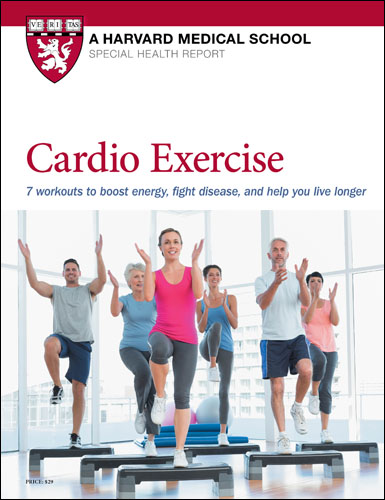Why the human heart thrives with exercise

How did the human heart adapt during our evolution as a species? To explore that question, Harvard cardiologist Dr. Aaron Baggish led a unique study that compared the hearts of African great apes, Mexican farmers, and American athletes. But the findings also have a practical message.
“They reinforce the importance of regular brisk walking or jogging throughout life to stay healthy as you age,” says Dr. Baggish, director of the cardiac performance lab at Harvard-affiliated Massachusetts General Hospital. The study included great apes (gorillas and chimpanzees) and four different groups of men: inactive men, endurance runners, football linemen, and Tarahumara Indians. All underwent detailed heart function studies using ultrasounds done during different activities.
Chimps vs. early humans
Chimpanzees, our closest evolutionary relatives, spend most of the day feeding and resting, interspersed with short bouts of climbing and fighting. This brief but intense exertion creates pressure in the heart’s chambers, resulting in thicker, stiffer walls. In contrast, our ancient ancestors had to hunt and gather food to survive, requiring them to walk and run long distances. As evolution progressed, early farmers relied on that same physical endurance to plow, plant, and harvest their food. As a result, human hearts evolved to have thinner walls and be more flexible. The heart’s chambers became slightly larger, and they also were able to twist slightly (similar to wringing out a towel), which helps get more blood out and back into the heart as it relaxes.
Pure of heart?
The Tarahumara Indians, who live in Copper Canyon, Mexico, are one of the few civilizations that remain largely untouched by Westernization. “They lead what anthropologists refer to as a subsistence farming lifestyle that demands lots of walking, jogging, and other movement all day long,” says Dr. Baggish.
“Their hearts represent how the heart has naturally evolved to function — the pure form of a human heart, if you will,” he says.
But your heart also adapts over your lifetime depending on what type of exercise you do — or don’t do.
The heart’s main pumping chamber, the left ventricle, reflects the type of activity a person typically does. The left ventricles of the endurance runners were longer, larger, and more elastic than average (and therefore able to cope with large volumes of blood). The hearts of the football linemen, on the other hand, were more adapted to short, intense bouts of exercise that reflects their strength training. The walls of their left ventricles were thicker and less flexible, allowing them to cope better with pressure rather than volume.
Inactivity harms the heart
However, the group of men who didn’t exercise ended up being the most important part of the story with respect to health lessons, says Dr. Baggish. These men, all in their 20s and 30s, didn’t have any traditional heart disease risk factors, such as high blood pressure. But their untrained hearts appeared more apelike, with thicker and less flexible walls.
“If you don’t do any physical activity, you don’t push large amounts of blood through your heart and blood vessels on a daily basis. Both the heart and blood vessels start to stiffen,” explains Dr. Baggish. It creates a vicious circle: the less you move, the less you’ll be able to do the type of exercise that keeps you healthy.
Exercise helps prevent high blood pressure
These new findings suggest that the process of developing high blood pressure is set in motion years before it is first detected in a doctor’s office, Dr. Baggish says. Unfortunately, only about 20% of American adults get the recommended 150 minutes per week of moderate-intensity physical activity. And about a third of adults have high blood pressure.
Even though it’s better to exercise throughout your life, it’s never too late to start. For many people, changing from being sedentary to active is hard and requires a real behavioral shift. “But the more we help people understand the underlying causes and implications of their choices, the better off we are,” says Dr. Baggish.
About the Author

Julie Corliss, Executive Editor, Harvard Heart Letter
Disclaimer:
As a service to our readers, Harvard Health Publishing provides access to our library of archived content. Please note the date of last review or update on all articles.
No content on this site, regardless of date, should ever be used as a substitute for direct medical advice from your doctor or other qualified clinician.
















